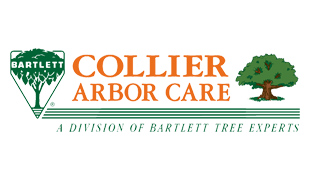|
Current Issue - Spring/Summer 2013 Show Back Issues |
|
||
 PHC Technician diagnosing foliage problems
PHC Technician diagnosing foliage problems
Plant Health Care vs. Target Pest TreatmentsNo matter how simple or complex your landscape may be, Collier Arbor Care provides a wide variety of insect and disease treatment programs. We are often asked by our clients which program is best. The answer depends on your needs and the needs of your plants. Do you want a comprehensive program that covers your whole yard or do you only have one key plant that has a problem? Whichever program you choose, we practice environmentally friendly and integrated pest management (IPM) techniques to manage your plant and pest problems. For those landscapes that are relatively un-complicated with a minimal variety of plant material or for just one or two key plants, we recommend our Our Plant Health Care Program (PHC) is our most comprehensive insect and disease treatment program. It will protect ornamental trees and shrubs in your entire landscape. The PHC program integrates the most holistic and state-of-the-art approach to tree and shrub care, from roots to shoots. This program consists of six to eight scheduled diagnostic inspections of all the ornamental trees and shrubs in your landscape. This enables us to detect and treat problems before they damage your plants. After each inspection we provide you with a written report of our findings and treat your landscape as necessary for harmful insects and diseases. We always suggest and implement solutions that are environmentally friendly. Both programs provide superior results for the reduction of insects and diseases. Organic options are available; choose the program that best fits your need and the needs of your landscape. Compost Tea: A New ServiceCollier Arbor Care has teamed up with Willamette Organics to offer Compost Tea treatments. What is Compost Tea? Compost Tea is made by brewing compost in water and then applying the blend to plants.
Compost Tea is made by brewing compost in water and then applying the blend to plants.
Good gardeners know the benefits of adding compost to their soil. Another way to get the benefits of compost is Compost Tea. Compost Tea is made by brewing compost in water. It’s then used as a foliar spray and/or a soil drench, depending on your problems. Compost Tea contains high concentrations of beneficial micro-organisms such as bacteria and fungi that combat disease causing organisms. How does it work?Good soils need a proper balance of beneficial microorganisms, and this enables plants to resist pests and diseases. Compost Tea works by adding beneficial microorganisms that help build soil structure and increase the amount of good organisms in the soil which out compete or kill the bad organisms. Healthy soils make plants happy and their immune system will build so they can resist stress caused by insect and disease problems. What's more, when sprayed on the leaves, compost tea may help suppress foliar diseases and increase the amount of nutrients available to the plant. Compost Tea is a totally organic approach to help keep your plants lush and green. We feel this is a wonderful new service that can be used in your garden, knowing it is safe for children, pets, and the environment. Please contact our office so one of our arborists can come by to give recommendations for your garden. |
 A specimen pruned Japanese Lace-leaf Maple
A specimen pruned Japanese Lace-leaf Maple
 Star Magnolia beautified by specimen pruning
Star Magnolia beautified by specimen pruning
 Pruning increases strength in branch structure, reducing hazards
Pruning increases strength in branch structure, reducing hazards
Why Prune Trees?One of the most common questions homeowners ask arborists is: "Why does a tree or shrub need to be pruned?" The answer to this question is not a simple one. One must ask themselves what is the purpose of the plant in the landscape? Is it performing to meet my needs? Is it growing too large, or blocking a mountain view or is it simply ugly? There are seven basic reasons why we prune trees:
 (left) Close-up of 1/2 inch white bloom with colored veins
(left) Close-up of 1/2 inch white bloom with colored veins(right) Clusters of unopened bell-shaped flowers  The Enkianthus narrow in its youth grows
The Enkianthus narrow in its youth grows broader with age  Anthracnose damage on a Dogwood
Anthracnose damage on a Dogwood
Featured Shrub: EnkianthusComing from Japan, the Enkianthus (Enkianthus campanulatus) has upright graceful stems with tiers of nearly horizontal branches. Narrow in its youth it grows broader with age. It is a beautiful specimen shrub that once you see it you will have to have one for your own garden. The leaves are 1-3 inches long, slightly toothed edges and are green in color turning to a brilliant yellow-orange to deep red in the fall. The true beauty of this shrub is the small pendulous flower clusters that hang downward in the late spring. The white bell shaped flowers are small 1/2 inch in size and have colored veins ranging from red to maroon. Like rhododendrons they require moist, well drained acidic soils with plenty of organic matter. Prune to emphasize their unique shape and remove any deadwood. Show these plants off in a prominent location where you can see up close its silhouette, flowers, and brilliant fall color. Spring Disease RecoveryOur rainy spring of 2005 will be remembered as the year of the blight disease for the devastating effects on fruiting, flowering and ornamental trees and shrubs. From Brown Blossom Blight and shot hole diseases in the Cherries and Plums, Anthracnose in the Maples, Sycamores and Dogwoods, and mildew everywhere else, foliar diseases had a destructive impact on the health of our plants this year. Expect that your plants may look worse before they start to recover. Diseased leaves will fall off and plants will look thin and unhealthy. It is too late this year for preventative disease treatments as the infection and damage has already occurred. The key is prevention for next year. Drier weather will bring an end to the infection of the foliage blights and healthier growth will start to appear later this summer. What are the steps we can take to help our plants recover from disease? Prune out diseased plant parts. Thin foliage to improve air circulation. Fertilize plants this fall to improve plant vigor. Apply compost tea to improve soil health by adding beneficial organisms. Mycorrhizae root treatments to help improve feeder root development and aid in nutrient uptake. Schedule a preventative treatment program to prevent the disease next year. Many diseases require a fall dormant application as well as preventative disease treatments in the spring for optimum control. 250 Year-old White Oak PreservedLast winter a near disaster struck the largest oak at the Oak Ridge Estates homeowners association. This 64-diameter inch 105-foot tall tree lost a large 28-inch diameter branch during a winter storm. Fortunately there was no damage to surrounding properties. However, losing a branch of this size left a large wound and revealed significant structural weakness of the large branch structure of the tree. These potential large branch failures were threatening the existence of this large Oregon white oak that is estimated to be over 250-years old. 
Losing their large oak was not an option to the Oak Ridge Estates homeowner’s board. Collier Arbor Care analyzed the health condition of the tree as well as evaluated the large wound and structural problems. A recommendation was made to put in an extensive cable system to insure help in the prevention of other large branch failures in the future. An extensive crown thinning and branch de-weighting was also performed. The result is a wonderful old tree preserved for future generations of homeowners to enjoy. |
|
Home |
Services |
The Arbor Advisor |
Garden Calendar |
About Us |
Fact Sheets |
Contact Us |
Site Map Collier Arbor Care Portland 503-722-7267 Vancouver (360) 693-6056 Site contents and design ©2013 Collier Arbor Care |







 top »
top »